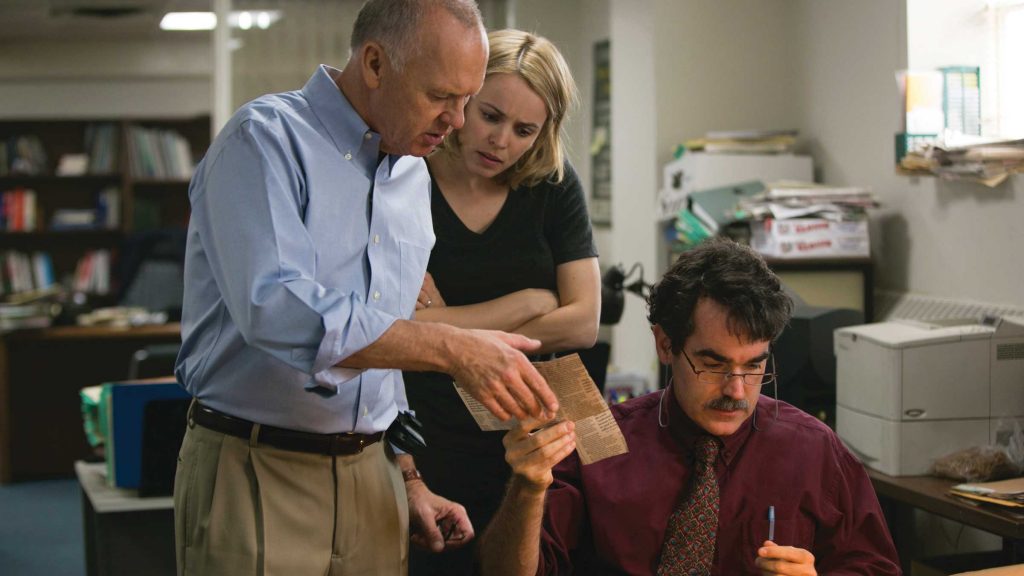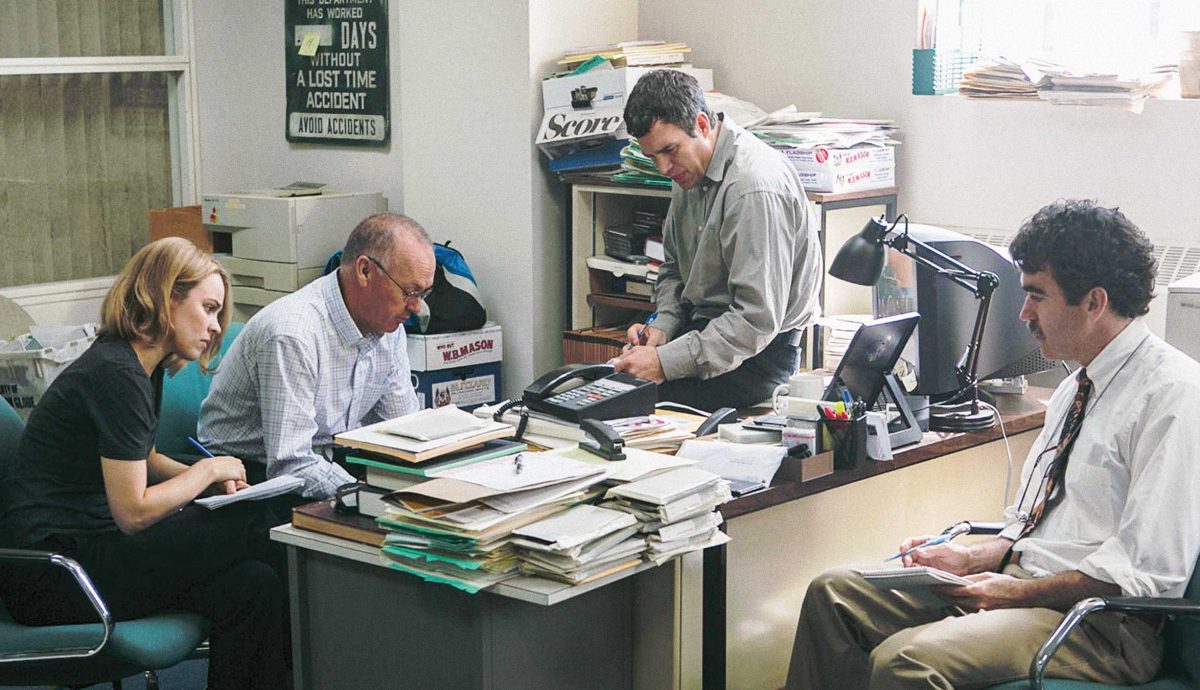
Tom McCarthy
Academy Award®-winning writer, director, actor, and producer
Notable works: Spotlight, The Visitor, The Station Agent
As a filmmaker, first and foremost, my job is storytelling.
Spotlight awards
“Spotlight (2015): Awards.” IMDb, 2019.
For a film to have an impact, it has to play well as a movie. It has to grab people’s interest. Whenever I take on a new topic, my first job is to find a story that will engage people. If they’re not engaged, then the film ceases to do its work as a tool for social impact.
With Spotlight — a film that explores sexual abuse, institutional abuse, and journalistic practices —we knew we had a powerful subject with many layers to it. We were also dealing with a story that a lot of people thought they knew, but few did: even The Boston Globe reporters who led the investigation had no idea of the scale of events or how many children had suffered at the hands of priests. I realized that, as an Irish Catholic who had lived in Boston, so much of the story was new even to me. So the challenge was to create a film that authentically transported the audience to that time before they were aware of the scope and severity of these crimes, in order to take them on a voyage of discovery.
One of the ways to do this was to ensure that the film was as accurate as possible, so we interviewed The Globe reporters about every little detail of the investigation. Sometimes we put it in their words, sometimes our words, but we would always go back to them to make sure we were staying true to the spirit of the story. Those reporters and editors read every draft of the script we gave them. We knew we would be held up to a lot of scrutiny because of the subject matter, so we had to get the facts right.

When you make a movie, you eventually reach a point where the studio starts thinking about how to promote it. And, ultimately, nothing helps spread the word more than having a good movie! Good movies have a way of pushing themselves out of the box and becoming must-see events.
I was fortunate in working with a company like Participant Media, which has a social impact team step in to direct that conversation, allowing me as a director to focus on the story. That can be very powerful. Most studios are not set up to do this, and that’s what makes Participant Media so unique. I try to give them the best film possible, then they can work toward finding the right partners and platforms to impact the issues we’ve highlighted.
Spotlight’s campaign website
Spotlight’s campaign website includes contact information for the National Sexual Assault Hotline, Survivors Network for Those Abused by Priests (SNAP), and the Childhelp National Child Abuse Hotline, as well as links to free guides and toolkits from the National Sexual Violence Resource Center for survivors, parents of survivors, and the communities and congregations affected by sexual abuse.
“Spotlight | Survivor Resources | TakePart.” TakePart, Participant Media.
http://www.takepart.com/spotlight/survivor-resources/index.html
Spotlight box office
“Spotlight.” Box Office Mojo, IMDb.com, Inc.
https://www.boxofficemojo.com/movies/?page=main&id=spotlight.htm
The Visitor box office
“The Visitor.” Box Office Mojo, IMDb.com, Inc.
The Visitor, an earlier film of mine, was entirely fictional but also had real-world concerns. It is a story about a lonely middle-aged man whose life changes after an encounter with a young immigrant couple in New York. This came about after a few trips I took to the Middle East. I was very affected by the people and way of life there, and it struck me that we were going to war in that part of the world, yet most Americans didn’t understand the cultures of the region.
When I got back to New York, I spent a lot of time in the Arab community, and the film’s characters started to take shape. At the time, people weren’t really talking about immigration, but that was when I started hearing about detention centers. I got an opportunity to visit one and I knew immediately I had to take on this story.

These detention centers were warehouses of human beings lost in a legal and cultural purgatory. The Visitor was able to shine a light on this and force viewers to confront how they felt about it. I tried to humanize the subject and make the story personal. In conjunction with the release of the film, the American Civil Liberties Union and Participant developed a social impact campaign that focused on the film’s themes of illegal detention, treatment of immigrants, and the legal challenges that immigrants face. They also created a website to promote the use of the film for educational purposes and within community programs. In addition, over one thousand lawyers were recruited and trained using the film and other materials on issues surrounding deportation.
The Boston Globe daily readers
Spotlight’s theatrical run was November 2015–May 2016.
“Scarborough USA+ 2016 Release 1 (Reissue 09-01-2016).” Nielsen Scarborough, Sept. 2017. Statista, www.statista.com/statistics/229709/readers-of-the-boston-globe-hr-daily-edition/.
Larson, Sarah. “‘Spotlight’ and Its Revelations.” The New Yorker, Condé Nast, 8 Dec. 2015.
https://www.newyorker.com/culture/sarah-larson/spotlight-and-its-revelations
While the experiences of making each of these films were different, the takeaways were similar. It’s about connection. It’s about empathy. It’s about understanding. Unless you can hook people, you’re not going to have the impact that we all so often seek. Ultimately, it’s about the story: if the story is good, it raises questions and starts a conversation that lives on past the film itself. If we can do that, we’ve done our job.
























































